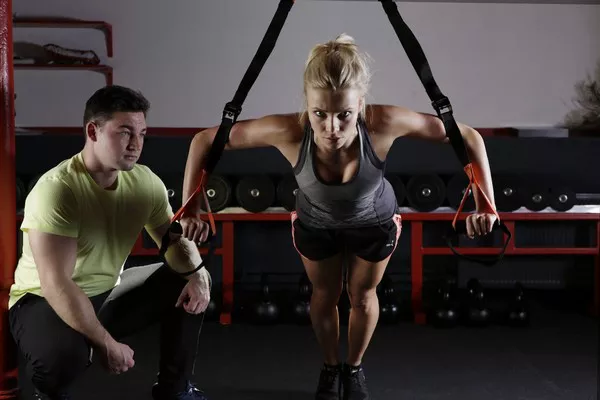Running, whether for recreation, fitness, or competition, is a demanding physical activity that primarily engages the lower body and cardiovascular system. However, a well-rounded training regimen for runners should include more than just running miles. Strength training, often overlooked by runners, plays a crucial role in enhancing performance, preventing injuries, and ensuring overall physical well-being. This article delves into the myriad benefits of strength training for runners, detailing how it can be effectively incorporated into a runner’s training program.
1. Enhanced Performance
Increased Power and Speed
Strength training builds muscle power, which directly translates into improved running speed and efficiency. By strengthening muscles through targeted exercises, runners can increase the force they exert with each stride. This results in more powerful and faster running, as the muscles can generate greater force in a shorter amount of time. Exercises like squats, lunges, and deadlifts are particularly effective in building the quadriceps, hamstrings, and glutes – the primary muscles involved in running.
Improved Running Economy
Running economy refers to the amount of energy a runner expends at a given pace. Strength training enhances running economy by improving neuromuscular coordination and muscle strength. This means that for the same level of effort, a runner can maintain a faster pace or sustain their current pace for longer. Strength training makes each step more efficient, reducing the energy cost of running and enabling better performance, especially in long-distance events.
Better Endurance
While it might seem counterintuitive, strength training also enhances muscular endurance. Muscles that are stronger can sustain prolonged activity without fatigue. This is particularly important for long-distance runners who need their muscles to perform optimally over extended periods. By incorporating exercises that target muscle endurance, such as high-repetition, low-weight lifts, runners can increase their stamina and reduce the likelihood of fatigue during long runs.
2. Injury Prevention
Stronger Muscles and Tendons
Strength training fortifies muscles and tendons, making them more resilient to the repetitive stress of running. This resilience reduces the risk of common running injuries such as shin splints, runner’s knee, and Achilles tendonitis. By strengthening the supportive muscles around the joints, runners can ensure better joint stability and alignment, minimizing the strain on these structures during running.
Improved Balance and Coordination
Balance and coordination are essential for maintaining proper running form and preventing falls or missteps. Strength training, particularly core exercises, enhances proprioception – the body’s ability to sense its position in space. Improved balance and coordination result in more stable and efficient running, reducing the risk of falls and injuries caused by poor form.
Addressing Muscle Imbalances
Runners often develop muscle imbalances due to the repetitive nature of the sport. For instance, the quadriceps may become disproportionately stronger than the hamstrings, leading to an increased risk of injury. Strength training helps identify and correct these imbalances. By targeting weaker muscle groups, runners can achieve a more balanced physique, which contributes to better overall biomechanics and reduced injury risk.
3. Enhanced Recovery
Reduced Muscle Soreness
Strength training, particularly eccentric exercises (where muscles lengthen under tension), has been shown to reduce muscle soreness associated with running. This is because these exercises improve the muscles’ ability to handle the stress of eccentric contractions, which are common in running as the body decelerates and absorbs impact with each step. Less soreness translates to quicker recovery times between runs and higher training consistency.
Improved Circulation
Strength training enhances circulation, promoting better blood flow to muscles and joints. This improved circulation helps with the delivery of oxygen and nutrients needed for muscle repair and recovery. By incorporating strength training, runners can facilitate faster recovery from workouts, ensuring they are ready for their next training session sooner.
Enhanced Flexibility and Mobility
Incorporating full range-of-motion exercises in strength training can enhance flexibility and mobility. Exercises that involve stretching and contracting muscles across their full length help maintain and even increase the flexibility of muscles and tendons. This improved flexibility can help runners maintain proper form and reduce the risk of injuries related to muscle tightness and restricted movement.
4. Mental Benefits
Increased Confidence
Strength training can significantly boost a runner’s confidence. Seeing improvements in strength and muscle tone provides a tangible sense of progress and accomplishment. This psychological boost can translate to better performance in running, as a more confident runner is often a more motivated and focused runner.
Stress Relief
Like running, strength training is an effective way to manage stress. The physical exertion helps release endorphins, the body’s natural mood elevators. By integrating strength training into their routine, runners can enjoy the mental health benefits of reduced stress and improved mood, contributing to overall well-being.
Variety and Motivation
Incorporating strength training adds variety to a runner’s routine, which can prevent burnout and keep motivation high. The change of pace from running to lifting weights or performing bodyweight exercises can be refreshing and enjoyable. This variety can help maintain long-term interest and commitment to an overall fitness program.
Building a Strength Training Program for Runners
Assessment and Goal Setting
Before starting a strength training program, runners should assess their current fitness level and identify specific goals. Whether the goal is to improve speed, build endurance, or prevent injuries, having clear objectives will help tailor the strength training routine to meet those needs.
Core Exercises
Core strength is crucial for runners as it supports overall stability and running form. Essential core exercises include planks, Russian twists, and leg raises. A strong core helps maintain posture, reduces lower back pain, and enhances the efficiency of each stride.
Lower Body Strength
Key lower body exercises for runners include squats, lunges, deadlifts, and calf raises. These exercises target the major muscle groups used in running, enhancing power and endurance. Incorporating both bilateral (e.g., squats) and unilateral (e.g., single-leg deadlifts) exercises ensures balanced development and addresses muscle imbalances.
Upper Body Strength
While running primarily engages the lower body, upper body strength is also important for maintaining form and efficiency, especially during long runs and sprints. Exercises like push-ups, pull-ups, and dumbbell rows help build upper body strength, supporting a more balanced physique and reducing the risk of fatigue-related form breakdown.
Plyometrics and Explosive Training
Plyometric exercises, such as box jumps and burpees, improve explosive power and running economy. These exercises train the muscles to contract quickly and forcefully, enhancing the ability to generate speed and power in each stride.
Flexibility and Mobility Work
Incorporating flexibility and mobility exercises, such as yoga and dynamic stretching, helps maintain range of motion and prevent stiffness. These practices can be integrated into the warm-up and cool-down routines to ensure muscles and joints remain supple and ready for activity.
Periodization and Recovery
A well-designed strength training program for runners should include periodization – the systematic planning of training cycles to optimize performance and recovery. This involves varying the intensity and volume of strength training sessions to align with the runner’s training and competition schedule. Adequate rest and recovery periods are essential to prevent overtraining and ensure continuous improvement.
Common Myths About Strength Training for Runners
Myth: Strength Training Makes You Bulky
One common misconception is that strength training will lead to excessive muscle bulk, which might slow a runner down. However, the type of strength training suitable for runners focuses on building lean muscle mass and strength, not bulk. High-repetition, low-weight exercises, and bodyweight training are effective in building strength without adding unnecessary bulk.
Myth: Strength Training is Only for Off-Season
While it’s true that strength training is often emphasized during the off-season, it should not be entirely neglected during the running season. Maintaining a regular, albeit possibly reduced, strength training routine throughout the year helps retain the benefits and supports continuous improvement and injury prevention.
Myth: Running Alone is Enough for Leg Strength
Running does build some leg strength, but it primarily develops cardiovascular endurance. To maximize performance and prevent injuries, it’s important to engage in specific strength training exercises that target all the muscles involved in running, including those that may not be fully engaged during running itself.
Conclusion
Strength training is an indispensable component of a comprehensive training program for runners. Its benefits span enhanced performance, injury prevention, improved recovery, and mental health. By incorporating a balanced strength training routine, runners can achieve better results, stay injury-free, and enjoy a more rewarding running experience. Understanding and integrating strength training principles tailored to running needs will ensure runners can maximize their potential and continue to enjoy their sport for years to come.
[inline_related_posts title=”You Might Be Interested In” title_align=”left” style=”list” number=”6″ align=”none” ids=”9619,9615,9547″ by=”categories” orderby=”rand” order=”DESC” hide_thumb=”no” thumb_right=”no” views=”no” date=”yes” grid_columns=”2″ post_type=”” tax=””]
































